
CTUAC.BELLE VIE D'AFRIQUE SCHOOL
Spende geschützt
https://youtu.be/h-uksv6bGTE
https://youtu.be/BjOkCQVBZRk
Guinea, West Africa
What's the big deal with Guinea West Africa?
According to BBC, The Republic of Guinea also known as the original Guinea takes up 245,857 sq km (94,926 sq miles) of the continent Africa with a population of 10.5 million. Guinea is a country located in the western hemisphere of Africa. Guinea is one of the few countries that have access to three of Western Africa's major rivers including the Gambia, the Niger, and the Sénégal. Guinea is bordered by Guinea-Bissau to the northwest, Senegal to the north, Mali to the northeast, Côte d’Ivoire to the southeast, and Liberia and Sierra Leone to the south, while the Atlantic Ocean lies to the west. According to USGS;science for a changing world, Guinea is known as the "water tower" of West Africa. Guinea has over 200 cities and villages which are divided into eight administrative regions and subdivided into thirty-three prefectures. The ten core cities in Guinea, West Africa include Nzérékoré, Kindia, Boké, Kankan, Kissidougou, Guékédou, Kamsar, Mamou, Macenta and Conakry; which is ultimately Guinea's capital, largest city, and its main economic source. The main languages spoken by the locals include but are not limited to arabic, french, susu, fulani, mandingo, wolof, english, spanish and asian dialects. The country has tried adapting programs to further expand education and ESL programs ;english as a second language, which is a program that's also implemented within the US schools. Guinea is gravely overlooked but yet has proved to be one of the most vital and significant third world countries that have contributed to international and US progress with the contribution of bauxite, diamond, gold, iron and chrome ores, titanium-zirconium, carbonate resources, fireclays, construction sand, shingle, and gravel to name a few. According to Geoscience News and Information; Guinea has major metallic resources, some of which are iron ore, gold, uranium, and large reserves of bauxite. Other important resources for this country include hydroelectricity, diamonds, fish and salt. According to this same source, Guinea ranked number 5 at 45,000 metric tons in bauxite production within the world. However, with all these resources there are only 3,723 schools within the entire country including but not limited to general education and trade schools resulting in technical and vocational degrees. The academic year lasts 10 months from October to July with a literacy rate of 35.9%. The student-teacher ratio for primary education is 49:1, while secondary schools are at a ratio of 29:1. This ratio reflects the teacher's workload and availability to offer services and care to their students. Many students and teachers have reported that the lower the ratio, the better the educational process and learning tends to be. Moreover, the educational enrollment rates are even more sparse, primary schools:54%, secondary schools:14%, and higher education falling at 1%. Public education put into effect during the constitution of 1958 guaranteed free education for every citizen until the age of 15, however this does not ensure that every child will be educated. Primary education is offered in the form of a six-year program beginning at age seven.According to StateUniversity.com Education Encyclopedia, "the legal and constitutional foundations of the educational system have been undermined by an early Socialist-inspired plan that often resulted in decrees being directly handed down from the executive branch of the government without any consultation or debate with qualified experts". Unfortunately, during this time period the number of adolescents not enrolled in school increased drastically from 311,291 females and 230,239 males in 2011 to 323,403 females and 236,018 males in 2014 due to a variety of social and financial barriers including but not limited to early arranged marriages, helping with work load around the home for females and continuing the families legacy of how income is earned. For example, due to the risk of rape while commuting to school most females stay back in the home with their mothers to learn domestic duties around the home preparing her for marriage. Men on the other hand, are typically to pick up the trade of their fathers and ancestors; for example, carpentry, singing(aka grio), acting within the entertainment field, farming, and the most common becoming a soldier. In 2014, 1,283,851 people within the population were reported as illiterate; with females making up for 733,117 of that sum. Due to the local citizens and governments prolonged efforts to educational progress, the number of children not enrolled in school decreased from 505,386 students in 2010 to 425,913 students in 2016. Despite the improvement of more children being enrolled in schools between 2010 and 2016, the amount of female children un-enrolled almost doubled compared to their male counterparts. The total number of females un-enrolled in 2010 totaled 306,176 and men totaled 199,210, after 6 years of educational progress, that number improved to 283,009 for females and 142,323 for males. Families with multiple children, especially those in rural areas compared to urban areas, tend to choose to educate boys instead of girls. While 53% of women ages 15 to 24 in urban areas are literate, only 15% of those in rural areas can say the same. As families in isolated areas and villages where the commute to school proves to be quite difficult due to the distance and unsafe travel methods which mainly include traveling by foot, these families are more likely to keep girls home to help with chores therefor, getting an education is much more of a challenge for rural Guinean girls.Guinean girls with younger siblings face the issue of being taken out of school to help and assist with cooking or other housework. This significantly affects their ability to keep up with schoolwork, which furthers the likelihood of dropping out altogether. A lack of proper toilet facilities keeps many girls out of school, for example girls of menstruating age lack the ability to dispose of sanitary pads and wash their hands in a single-sex bathrooms, which is vital. UNICEF estimates that 10 percent of female students in Africa will skip school during their periods due to improper facilities, resulting in missed lessons and raising the likelihood of abandoning school altogether.UNICEF has implemented several local associations, known as COMEFs, to support girls’ education in Guinea. These associations work to empower Guinean mothers, who themselves more than likely lack education, to become vigorous supporters of their daughters’ schooling. UNICEF’s main objectives are ensuring safe classrooms, helping families purchase school supplies and demonstrating how education leads to a financially healthy future. According to United Institute for statistics, children ages 14 and younger represent 44% of the Guinean population in 2018; which is one of the main contributing factors to why our organization believes focusing and improving the educational process and system on the early childhood level is critical to an individual's livelihood, success, and financial freedom. It is our belief that morals, standards, values, beliefs and rights implemented during early childhood definitely contribute to their future. The basis of education is defined as a social process that involves individuals of a society where a school is created by the society which is directly shaped and moulded by the school by further installing morals, standards, basic human rights, and the importance of education. Furthermore, education is both a cause and product of society.Within the entire country, almost 50% of the schools are located in Conakry, Guinea, while the majority of primary schools are also located within this capital. There is an unknown number of primary schools within the country, however it has been said that of the known 3,723 schools, there are less than 35 early childhood elementary primary schools total. It is a known fact that the majority of schools in the country are located in national and regional capitals. Kankan is strategically located on relatively decent road from Conakry to Bamako, Mali. The town also known for having the 2nd largest public university in the country(Universite de KanKan), with an implemented ESL program; which adds to its popularity. Kankan still lacks full access non-stop electricity or running water, however that has not stopped this district from rising to the nation’s second largest town and largest district in Guinea in land area, also known as a regional capital. The railway from Conakry comes to an end at Kankan measuring at about 411 miles, while the hub of roads from Bamako (Mali), Siguiri, Kouroussa, and Nzérékoré also lead to Kankan. The district of Kankan is also known as the commercial and transportation center of Guinea’s northeastern savanna region, it is also the chief trading center amongst the locals. Kankan has light manufacturing and traditional craft within the gold, ivory, wood industries. Educational institutions include the University of Kankan (1963), approximately 3 early childhood education primary schools within 150 mile radius, the national police school (1959) at Camp Soundiata, a vocational school, and a rice research institute. Due to the low number of early childhood primary schools in the district, most families send their children off to neighboring towns with schools and or Conakry, Guinea which is the national capital and known to have more resources and educational facilities. Kankan is a regional capital and district surrounded by 4 other districts known Kouroussa, Kerouane, Mandiana, and Siguiri. Within this region there are three runways,while the only paved runway is strategically located in the center of the region capital Kankan, the other two(2) unpaved runways are located in Siguiri to the north of Kankan and Banankoro to the south of Kankan. Currently there are two early childhood primary schools within this region (1)primary school of Dabadou Karamo located between two villages, Mandiana and Koroussa however there are over 200 surrounding villages who must also utilize the only accessible educational facility within their regions and districts. The other early childhood primary school is known as the primary school of Gbenko, located in Banankoro. The distance between Kankan and Banankoro is about 115 mile, while the distance between Kankan and Kerouane is about 80 miles give or take. It is the goal of this organization to help further the educational system within Guinea, West Africa but specifically, the district of Kankan which has proved to be quite beneficial to the nations success. There is a village that is gravely overlooked called Konedu and/or Condedou 2, that lies between two major towns in Guinea, West Africa; Banankoro and Kerouane approximately 100 miles to travel, while the distance between Kerouane and Conakry is about 319 miles. Students often commute to schools by walking in groups to prevent harm or danger from coming to them if they there to commute alone while some families who are a bit more affluent can afford to relocate and/or use of other forms of transportation to commute including but not limited to carpooling and motorcycle transit; however majority of student relocate to be in close proximity to the learning facilities in their regions. Depending of the living conditions and status of their family in society, some children aren't even given the option to attend school because it seems so out of reach both literal and figuratively. Realistically, if the educational facility is further than 25-40 miles from their homes, students relocate to a family members home within close proximity for the duration of their time at that school mainly due to the poor conditions of the road which make traveling even more difficult and time consuming. For example, the main road from Kankan to Kerouane normally has bridge over the main river and water source of the region that leads into bordering villages, this bridge is vital in the commute back and forth between the neighboring villages and towns. However, due to the lack of attention that bridge has degraded and needs to be reconstructed in order to reconvene and enhance commute whether it be to gain income and or knowledge. These villages already lack clean running water and constant electricity, now their main road of transportation they use to earn income or education as they strive for better quality lives for themselves and their families have been put at a standstill. I have started a community fundraiser for the construction of that bridge, the goal is $7,500, I've personally donated $3000 towards the goal because I believe this piece of infrastructure is vital for the improvement and progress of the educational system in country as a whole. However the main goal of this fundraiser to raise awareness to how poor the educational system in other parts of the world are as compared to that of ours in the US. Due to the lack of schools in the Southern region of Kankan I've decided its important to have a equal opportunity to education regardless of ones status and or residency. Whether one lives in the national capital or a village where people still live in hut houses, everyone should be offered equal rights to education and there should be no difference in the curriculum across the nation between urban and or rural areas. To further aid in minimizing the disparity of education between rural and urban areas, I've decided to start a fundraiser to build an early childhood primary school also known as elementary school. I have purchased and donated some land where the school can be constructed. The land is approximately 2 acres. With hind sight, I am anticipating the school to offer grades Kindergarden-6th grade, ages 5-11. Initially one teacher per grade, taking into consideration the ratio 20 students:1 teacher. However, as student enrollment increase the number of teachers for that grade will also increase to coincide. At the infancy stage of the school,staff members will include 2 security personnels, 7 teachers, 1 principal, 2 lunch ladies, and 2 janitors. Expected enrollment for the first year is approximately 120-150 students. Once the school is completely constructed, due to its public status; the government has agreed to provide and finance the teachers that will educate the students. Currently the owners of Konedu Home Care, LLC and Discovering Kindness Home Health of Woodbridge, CT have been donating 2% of their proceeds to improving the educational and health care systems in Konedu, Guinea.
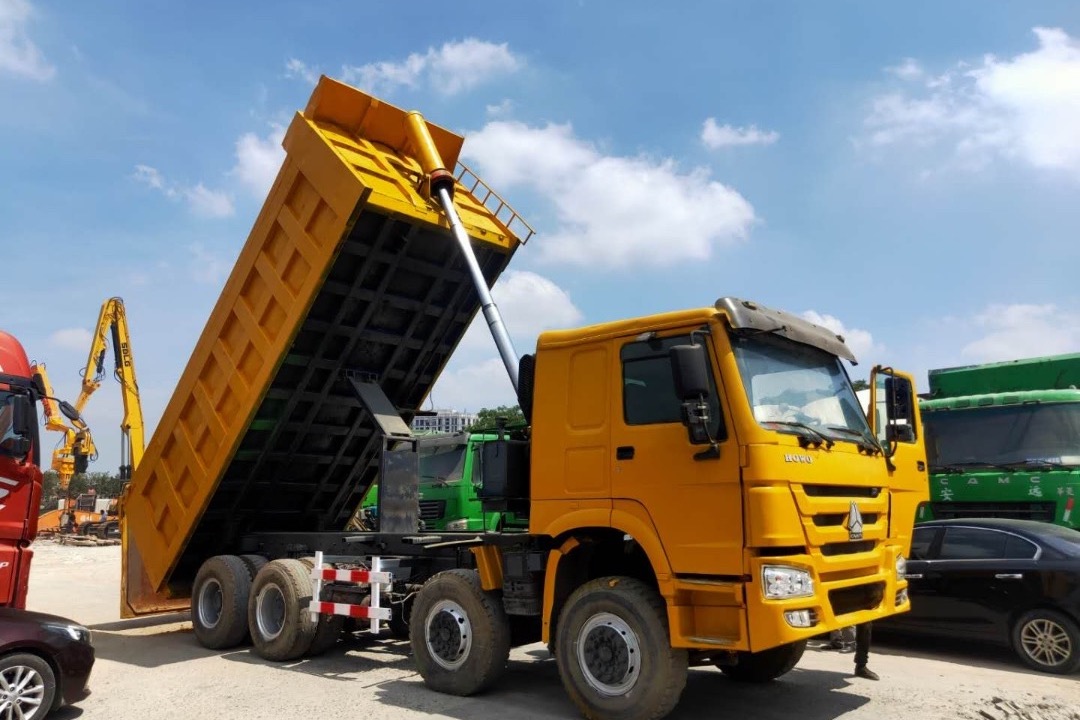
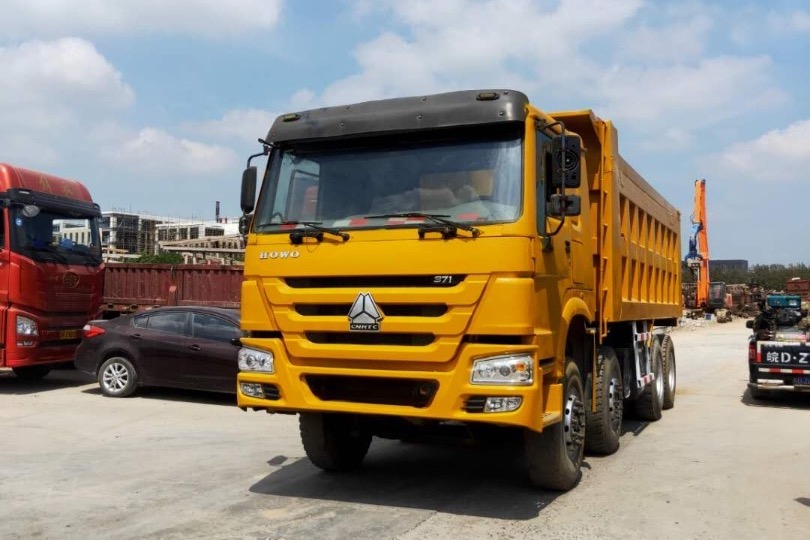 Konedu Home Care, LLC has also donated a dump truck worth approximately $25,000, to assist with the transportation of construction materials.
Konedu Home Care, LLC has also donated a dump truck worth approximately $25,000, to assist with the transportation of construction materials.
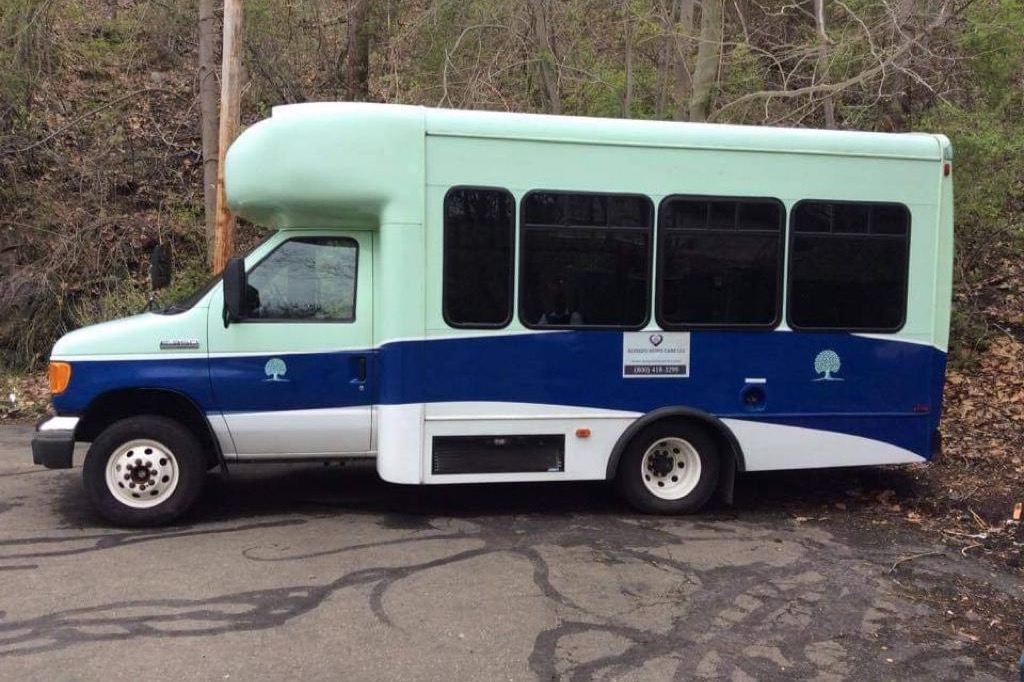
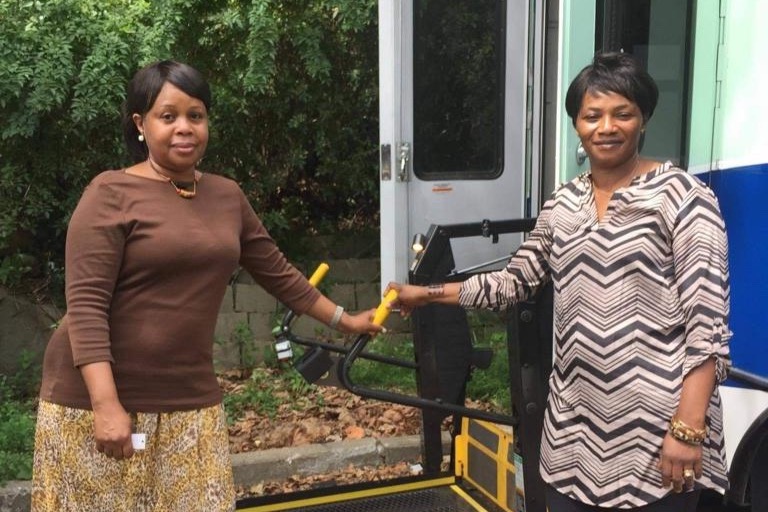 These two companies and individuals mentioned above have not only donated money, land, health care materials including but not limited to sanitary items, but a van worth $15,000 has also been donated to the cause in order to assist and make the commute easier and available to those students and families who don't attend school because of safety concerns and the lack of transportation means to make the commute.
These two companies and individuals mentioned above have not only donated money, land, health care materials including but not limited to sanitary items, but a van worth $15,000 has also been donated to the cause in order to assist and make the commute easier and available to those students and families who don't attend school because of safety concerns and the lack of transportation means to make the commute.
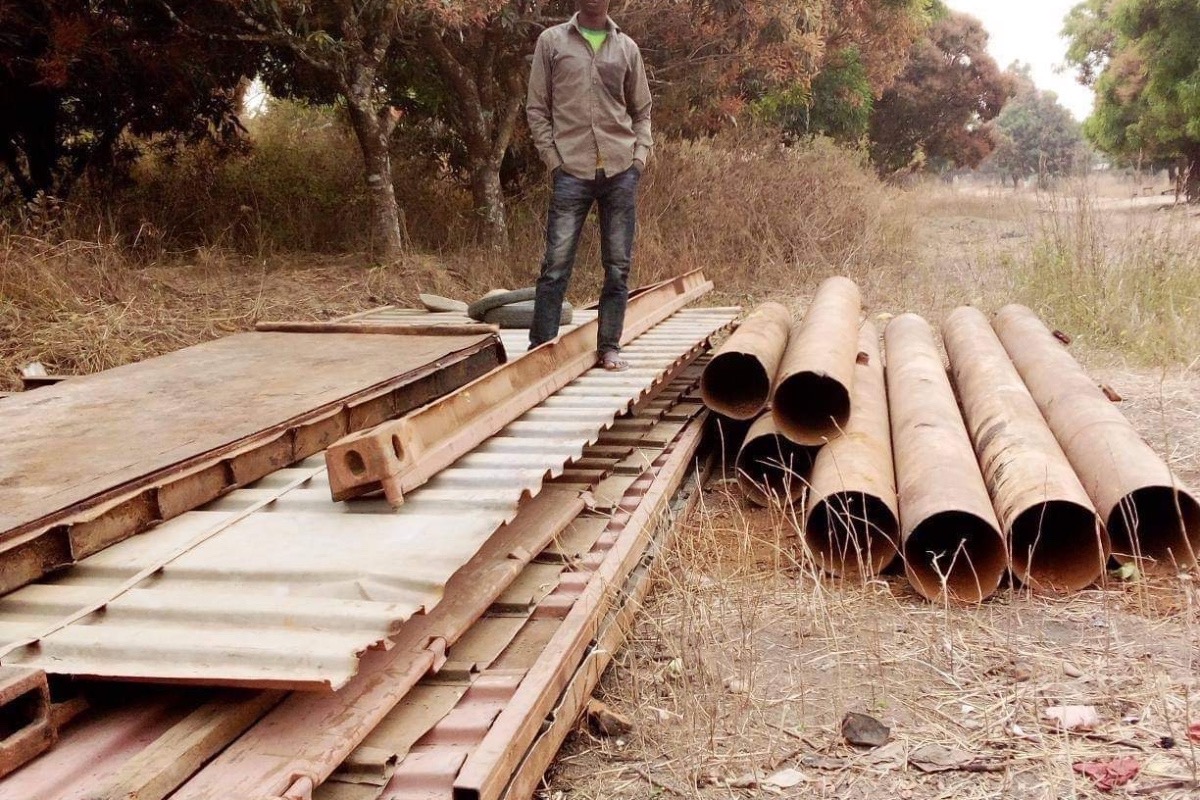
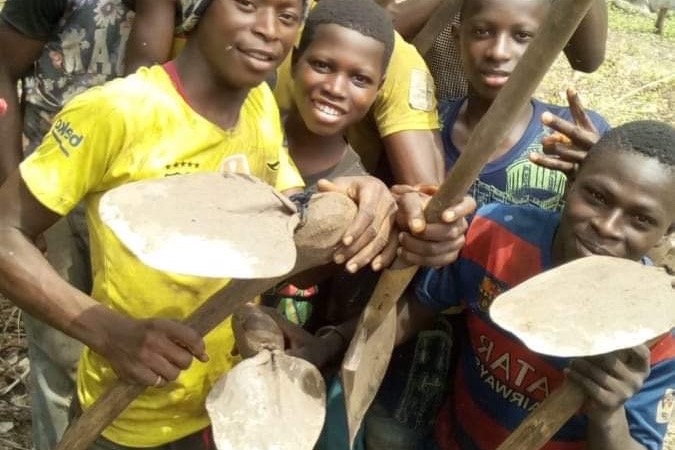 Please help us to fulfill this goal by helping children and families in need. These needs and necessities include allowing them accessibility to education in general which includes having an educational facility in close proximity, transportation to and from school, providing a safe environment for students to learn also giving the families and parents the opportunity to have the time to earn income while the children are in school. Overall we want to provide equal educational rights to both rural and urban areas, taking into consideration most schools are constructed in urban areas; we'd like to bring awareness to this inequality while combatting this problem and making a change. Dr. Doussouba Kourouma, the owner of these two companies is also the president of United African Congress (CT Chapter) which is a non-profit organization that works to unify Continental Africans in an effort to build capacity and empower them in the Americas and in their homelands. It takes a village to raise a child.
Please help us to fulfill this goal by helping children and families in need. These needs and necessities include allowing them accessibility to education in general which includes having an educational facility in close proximity, transportation to and from school, providing a safe environment for students to learn also giving the families and parents the opportunity to have the time to earn income while the children are in school. Overall we want to provide equal educational rights to both rural and urban areas, taking into consideration most schools are constructed in urban areas; we'd like to bring awareness to this inequality while combatting this problem and making a change. Dr. Doussouba Kourouma, the owner of these two companies is also the president of United African Congress (CT Chapter) which is a non-profit organization that works to unify Continental Africans in an effort to build capacity and empower them in the Americas and in their homelands. It takes a village to raise a child.
https://www.ctunitedafricancongress.org
Konedu, Guinea West Africa aka Condedu
La Belle Vie D'Afrique ecole primaire
"Despite their living conditions they still see beauty of life"
https://youtu.be/BjOkCQVBZRk
Guinea, West Africa
What's the big deal with Guinea West Africa?
According to BBC, The Republic of Guinea also known as the original Guinea takes up 245,857 sq km (94,926 sq miles) of the continent Africa with a population of 10.5 million. Guinea is a country located in the western hemisphere of Africa. Guinea is one of the few countries that have access to three of Western Africa's major rivers including the Gambia, the Niger, and the Sénégal. Guinea is bordered by Guinea-Bissau to the northwest, Senegal to the north, Mali to the northeast, Côte d’Ivoire to the southeast, and Liberia and Sierra Leone to the south, while the Atlantic Ocean lies to the west. According to USGS;science for a changing world, Guinea is known as the "water tower" of West Africa. Guinea has over 200 cities and villages which are divided into eight administrative regions and subdivided into thirty-three prefectures. The ten core cities in Guinea, West Africa include Nzérékoré, Kindia, Boké, Kankan, Kissidougou, Guékédou, Kamsar, Mamou, Macenta and Conakry; which is ultimately Guinea's capital, largest city, and its main economic source. The main languages spoken by the locals include but are not limited to arabic, french, susu, fulani, mandingo, wolof, english, spanish and asian dialects. The country has tried adapting programs to further expand education and ESL programs ;english as a second language, which is a program that's also implemented within the US schools. Guinea is gravely overlooked but yet has proved to be one of the most vital and significant third world countries that have contributed to international and US progress with the contribution of bauxite, diamond, gold, iron and chrome ores, titanium-zirconium, carbonate resources, fireclays, construction sand, shingle, and gravel to name a few. According to Geoscience News and Information; Guinea has major metallic resources, some of which are iron ore, gold, uranium, and large reserves of bauxite. Other important resources for this country include hydroelectricity, diamonds, fish and salt. According to this same source, Guinea ranked number 5 at 45,000 metric tons in bauxite production within the world. However, with all these resources there are only 3,723 schools within the entire country including but not limited to general education and trade schools resulting in technical and vocational degrees. The academic year lasts 10 months from October to July with a literacy rate of 35.9%. The student-teacher ratio for primary education is 49:1, while secondary schools are at a ratio of 29:1. This ratio reflects the teacher's workload and availability to offer services and care to their students. Many students and teachers have reported that the lower the ratio, the better the educational process and learning tends to be. Moreover, the educational enrollment rates are even more sparse, primary schools:54%, secondary schools:14%, and higher education falling at 1%. Public education put into effect during the constitution of 1958 guaranteed free education for every citizen until the age of 15, however this does not ensure that every child will be educated. Primary education is offered in the form of a six-year program beginning at age seven.According to StateUniversity.com Education Encyclopedia, "the legal and constitutional foundations of the educational system have been undermined by an early Socialist-inspired plan that often resulted in decrees being directly handed down from the executive branch of the government without any consultation or debate with qualified experts". Unfortunately, during this time period the number of adolescents not enrolled in school increased drastically from 311,291 females and 230,239 males in 2011 to 323,403 females and 236,018 males in 2014 due to a variety of social and financial barriers including but not limited to early arranged marriages, helping with work load around the home for females and continuing the families legacy of how income is earned. For example, due to the risk of rape while commuting to school most females stay back in the home with their mothers to learn domestic duties around the home preparing her for marriage. Men on the other hand, are typically to pick up the trade of their fathers and ancestors; for example, carpentry, singing(aka grio), acting within the entertainment field, farming, and the most common becoming a soldier. In 2014, 1,283,851 people within the population were reported as illiterate; with females making up for 733,117 of that sum. Due to the local citizens and governments prolonged efforts to educational progress, the number of children not enrolled in school decreased from 505,386 students in 2010 to 425,913 students in 2016. Despite the improvement of more children being enrolled in schools between 2010 and 2016, the amount of female children un-enrolled almost doubled compared to their male counterparts. The total number of females un-enrolled in 2010 totaled 306,176 and men totaled 199,210, after 6 years of educational progress, that number improved to 283,009 for females and 142,323 for males. Families with multiple children, especially those in rural areas compared to urban areas, tend to choose to educate boys instead of girls. While 53% of women ages 15 to 24 in urban areas are literate, only 15% of those in rural areas can say the same. As families in isolated areas and villages where the commute to school proves to be quite difficult due to the distance and unsafe travel methods which mainly include traveling by foot, these families are more likely to keep girls home to help with chores therefor, getting an education is much more of a challenge for rural Guinean girls.Guinean girls with younger siblings face the issue of being taken out of school to help and assist with cooking or other housework. This significantly affects their ability to keep up with schoolwork, which furthers the likelihood of dropping out altogether. A lack of proper toilet facilities keeps many girls out of school, for example girls of menstruating age lack the ability to dispose of sanitary pads and wash their hands in a single-sex bathrooms, which is vital. UNICEF estimates that 10 percent of female students in Africa will skip school during their periods due to improper facilities, resulting in missed lessons and raising the likelihood of abandoning school altogether.UNICEF has implemented several local associations, known as COMEFs, to support girls’ education in Guinea. These associations work to empower Guinean mothers, who themselves more than likely lack education, to become vigorous supporters of their daughters’ schooling. UNICEF’s main objectives are ensuring safe classrooms, helping families purchase school supplies and demonstrating how education leads to a financially healthy future. According to United Institute for statistics, children ages 14 and younger represent 44% of the Guinean population in 2018; which is one of the main contributing factors to why our organization believes focusing and improving the educational process and system on the early childhood level is critical to an individual's livelihood, success, and financial freedom. It is our belief that morals, standards, values, beliefs and rights implemented during early childhood definitely contribute to their future. The basis of education is defined as a social process that involves individuals of a society where a school is created by the society which is directly shaped and moulded by the school by further installing morals, standards, basic human rights, and the importance of education. Furthermore, education is both a cause and product of society.Within the entire country, almost 50% of the schools are located in Conakry, Guinea, while the majority of primary schools are also located within this capital. There is an unknown number of primary schools within the country, however it has been said that of the known 3,723 schools, there are less than 35 early childhood elementary primary schools total. It is a known fact that the majority of schools in the country are located in national and regional capitals. Kankan is strategically located on relatively decent road from Conakry to Bamako, Mali. The town also known for having the 2nd largest public university in the country(Universite de KanKan), with an implemented ESL program; which adds to its popularity. Kankan still lacks full access non-stop electricity or running water, however that has not stopped this district from rising to the nation’s second largest town and largest district in Guinea in land area, also known as a regional capital. The railway from Conakry comes to an end at Kankan measuring at about 411 miles, while the hub of roads from Bamako (Mali), Siguiri, Kouroussa, and Nzérékoré also lead to Kankan. The district of Kankan is also known as the commercial and transportation center of Guinea’s northeastern savanna region, it is also the chief trading center amongst the locals. Kankan has light manufacturing and traditional craft within the gold, ivory, wood industries. Educational institutions include the University of Kankan (1963), approximately 3 early childhood education primary schools within 150 mile radius, the national police school (1959) at Camp Soundiata, a vocational school, and a rice research institute. Due to the low number of early childhood primary schools in the district, most families send their children off to neighboring towns with schools and or Conakry, Guinea which is the national capital and known to have more resources and educational facilities. Kankan is a regional capital and district surrounded by 4 other districts known Kouroussa, Kerouane, Mandiana, and Siguiri. Within this region there are three runways,while the only paved runway is strategically located in the center of the region capital Kankan, the other two(2) unpaved runways are located in Siguiri to the north of Kankan and Banankoro to the south of Kankan. Currently there are two early childhood primary schools within this region (1)primary school of Dabadou Karamo located between two villages, Mandiana and Koroussa however there are over 200 surrounding villages who must also utilize the only accessible educational facility within their regions and districts. The other early childhood primary school is known as the primary school of Gbenko, located in Banankoro. The distance between Kankan and Banankoro is about 115 mile, while the distance between Kankan and Kerouane is about 80 miles give or take. It is the goal of this organization to help further the educational system within Guinea, West Africa but specifically, the district of Kankan which has proved to be quite beneficial to the nations success. There is a village that is gravely overlooked called Konedu and/or Condedou 2, that lies between two major towns in Guinea, West Africa; Banankoro and Kerouane approximately 100 miles to travel, while the distance between Kerouane and Conakry is about 319 miles. Students often commute to schools by walking in groups to prevent harm or danger from coming to them if they there to commute alone while some families who are a bit more affluent can afford to relocate and/or use of other forms of transportation to commute including but not limited to carpooling and motorcycle transit; however majority of student relocate to be in close proximity to the learning facilities in their regions. Depending of the living conditions and status of their family in society, some children aren't even given the option to attend school because it seems so out of reach both literal and figuratively. Realistically, if the educational facility is further than 25-40 miles from their homes, students relocate to a family members home within close proximity for the duration of their time at that school mainly due to the poor conditions of the road which make traveling even more difficult and time consuming. For example, the main road from Kankan to Kerouane normally has bridge over the main river and water source of the region that leads into bordering villages, this bridge is vital in the commute back and forth between the neighboring villages and towns. However, due to the lack of attention that bridge has degraded and needs to be reconstructed in order to reconvene and enhance commute whether it be to gain income and or knowledge. These villages already lack clean running water and constant electricity, now their main road of transportation they use to earn income or education as they strive for better quality lives for themselves and their families have been put at a standstill. I have started a community fundraiser for the construction of that bridge, the goal is $7,500, I've personally donated $3000 towards the goal because I believe this piece of infrastructure is vital for the improvement and progress of the educational system in country as a whole. However the main goal of this fundraiser to raise awareness to how poor the educational system in other parts of the world are as compared to that of ours in the US. Due to the lack of schools in the Southern region of Kankan I've decided its important to have a equal opportunity to education regardless of ones status and or residency. Whether one lives in the national capital or a village where people still live in hut houses, everyone should be offered equal rights to education and there should be no difference in the curriculum across the nation between urban and or rural areas. To further aid in minimizing the disparity of education between rural and urban areas, I've decided to start a fundraiser to build an early childhood primary school also known as elementary school. I have purchased and donated some land where the school can be constructed. The land is approximately 2 acres. With hind sight, I am anticipating the school to offer grades Kindergarden-6th grade, ages 5-11. Initially one teacher per grade, taking into consideration the ratio 20 students:1 teacher. However, as student enrollment increase the number of teachers for that grade will also increase to coincide. At the infancy stage of the school,staff members will include 2 security personnels, 7 teachers, 1 principal, 2 lunch ladies, and 2 janitors. Expected enrollment for the first year is approximately 120-150 students. Once the school is completely constructed, due to its public status; the government has agreed to provide and finance the teachers that will educate the students. Currently the owners of Konedu Home Care, LLC and Discovering Kindness Home Health of Woodbridge, CT have been donating 2% of their proceeds to improving the educational and health care systems in Konedu, Guinea.

 Konedu Home Care, LLC has also donated a dump truck worth approximately $25,000, to assist with the transportation of construction materials.
Konedu Home Care, LLC has also donated a dump truck worth approximately $25,000, to assist with the transportation of construction materials.
 These two companies and individuals mentioned above have not only donated money, land, health care materials including but not limited to sanitary items, but a van worth $15,000 has also been donated to the cause in order to assist and make the commute easier and available to those students and families who don't attend school because of safety concerns and the lack of transportation means to make the commute.
These two companies and individuals mentioned above have not only donated money, land, health care materials including but not limited to sanitary items, but a van worth $15,000 has also been donated to the cause in order to assist and make the commute easier and available to those students and families who don't attend school because of safety concerns and the lack of transportation means to make the commute.
 Please help us to fulfill this goal by helping children and families in need. These needs and necessities include allowing them accessibility to education in general which includes having an educational facility in close proximity, transportation to and from school, providing a safe environment for students to learn also giving the families and parents the opportunity to have the time to earn income while the children are in school. Overall we want to provide equal educational rights to both rural and urban areas, taking into consideration most schools are constructed in urban areas; we'd like to bring awareness to this inequality while combatting this problem and making a change. Dr. Doussouba Kourouma, the owner of these two companies is also the president of United African Congress (CT Chapter) which is a non-profit organization that works to unify Continental Africans in an effort to build capacity and empower them in the Americas and in their homelands. It takes a village to raise a child.
Please help us to fulfill this goal by helping children and families in need. These needs and necessities include allowing them accessibility to education in general which includes having an educational facility in close proximity, transportation to and from school, providing a safe environment for students to learn also giving the families and parents the opportunity to have the time to earn income while the children are in school. Overall we want to provide equal educational rights to both rural and urban areas, taking into consideration most schools are constructed in urban areas; we'd like to bring awareness to this inequality while combatting this problem and making a change. Dr. Doussouba Kourouma, the owner of these two companies is also the president of United African Congress (CT Chapter) which is a non-profit organization that works to unify Continental Africans in an effort to build capacity and empower them in the Americas and in their homelands. It takes a village to raise a child. https://www.ctunitedafricancongress.org
Konedu, Guinea West Africa aka Condedu
La Belle Vie D'Afrique ecole primaire
"Despite their living conditions they still see beauty of life"
Organisator
Doussouba Kourouma
Organisator
West Haven, CT